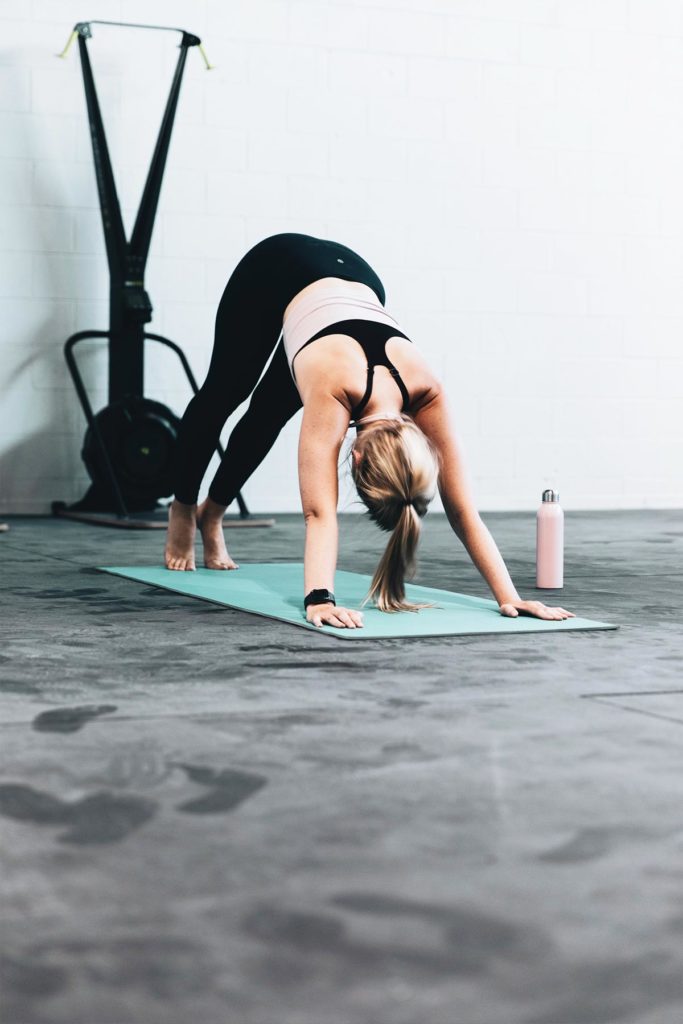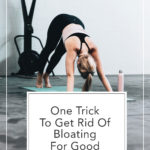
Bloating is not just a culprit of what you eat. While that is certainly playing a role there are other things that can help bloating, like stretching out your abdominal wall. Learn how inside this post.
I’m no stranger to stomach bloating. It was the main culprit driving my health problems and leading to me pursuing a career in this field. Working to understand gut-health issues and what it really takes to healthify the gut microbiome.
While I tried all of the latest therapeutic diets and elimination plans, which definitely helped, and I’ve continued to do. I still couldn’t seem to overcome the end-of-the-day bloat that made me feel exhausted.
Yet as I continued researching, studying, and trying new things, I found one thing that I hadn’t been doing nor heard about. That is how fascia plays a role in the abdominal cavity. Changing how our body processes things, the mobility of organ systems, communication pathways, and even the health of our gut microbiome
.
When I started to work on my inner fascia system, especially in my abdominal cavity, I made a lot of progress. Progress that not only lessened my bloat but healthify the whole of who I am.
Which is the power of fascia.
What is fascia and how does it help bloating?
Before I tell you how to work your fascia, I think it’s important to know the why. Because once you know, you can start to healthify your abdominal or visceral fascia and the fascia that runs throughout your entire system.
Fascia is a spiderweb-like densely woven tissue covering and penetrating every muscle, bone, nerve, artery, vein, organ, and spinal cord. Unlike other separate systems, the fascial system is a continuous structure that exists from head to toe without interruption.
It is also the body’s richest sensory organ system, penetrating every cell inside the body down to the cell nucleus. While it is responsible for our structure and shape, making up the look of your external appearance, it has many other important roles, including gut health.
Bloating or no bloating, if you want a flatter stomach, you have to care for your inner fascial system.
Like all things, there is a difference between healthy fascia and unhealthy fascia. Healthy fascia relies on movement, hydration, and flow to keep it springy, flexible, and open to healthy communication. Unhealthy fascia is hard, dense, and compacted. It’s like a dry used sponge that has sat out in the sun too long, becoming brittle and not easily pliable. Leading to a lack of flow, injuries, stress, bad posture, and emotional irregularity.
Abdominal Fascia & A Compressed Midsection
While there are many reasons your fascia becomes unhealthy when it comes to bloating and your abdominal cavity, stress is the leading cause of a compressed abdominal wall. Think about what happens in a stressed response, your muscles contract, your stomach tightens, your breath rate quickens, and those deep belly breaths turn into short, quick chest breaths.
Basically, your entire midsection clamps down and reduces flow, including oxygen, nutrients, lymphatic movement, and intestinal mobility.
Muscle tension and a compressed midsection signal to your brain that all is not well. Keeping your body stuck in sympathetic activation, impairing digestion, causing constipation, cramps, gas, bloating, and an imbalance in healthy gut bacteria. All leading to a build-up of abdominal fat.
The more often you stay in this stressed state, the more your midsection compresses, and you have less ability to take deep breaths. Deep breaths that stimulate the vagus nerve to enter into a state of relaxation.
Meaning, the more stressed you are and the longer you stay there, the harder it is to relax.
But it doesn’t have to stay that way – the answer is movement medicine.
A New Wellness Term: Movement Medicine
Movement Medicine is a newer term in the wellness field. The idea is that our bodies need to move to stay well – creating a field that opens up flow inside the body so everything can work according to plan.
Movement Medicine is also one of the best ways to enhance your gut bacteria, lessen your digestive issues and help bloating. And the way to do that is to move your body or move your tissue, specifically in the abdominal cavity. And I’m not talking about more crunches, which only increase the severity of abdominal constriction, making all of these problems worse, not better.
Instead, it’s about opening up your abdominal wall, loosening the fascia that is so condensed around your organs, helping you to look thinner, stand straighter, and suffer with less bloating. The way to do this is abdominal rolling. Abdominal rolling is one clear way to help bloating that you probably haven’t tried.
I know it seems strange to touch your stomach. Given that it’s a sensitive space with lots of soft tissue foam rolling, your stomach seems more like a place you’d bypass rather than work. But some argue it’s your stomach that is the most critical to touch. It’s home to the main lymphatic pathways, the most condensed areas of fascia, and the house of nearly all of your internal organs.
So we may as well get acquainted with your stomach – rather than hating it.
Honestly, abdominal rolling is a simple practice that only takes 2-3 minutes to complete. If you’re familiar with foam rolling, you’ll become a quick expert on visceral rolling. If not, I have the exact directions to get started.
How To Roll Your Stomach
The only thing you need to get started is a soft space to lay on the ground and a rubber ball like a dodge ball or kickball. You can also purchase a specific foam rolling sphere. Here is the one I recommend.
Step One:
Once you have your equipment, find space on the floor and place the ball underneath your pelvic bone. Lay in a plank position with the ball underneath your abdomen.
Step Two:
Use your arms to prop your upper body up. Dropping your knees to add or release more pressure, depending on how it feels. Roll up and down throughout the entire length of your abdominals. Make sure your roll right under your rib cage where your diaphragm is housed.
The goal is to move from the lower right-hand hip to the right rib cage, over to the left rib cage, and down to the lower left hip. Continue making slow movements up and down, pausing on any spots that feel particularly stuck. Make sure you apply enough pressure to work the tissue but not enough pressure to cause pain. If any areas feel particularly painful, reduce the pressure and move to a different area.
Step Three:
Continue taking deep breaths throughout this entire exercise. Work your stomach for one minute, working yourself up to 2-4 minutes per day.
Step Four:
Once you finish, sit up and take a series of deep breathes to really move and expand that area.
Repeat as often as possible.
Listen To Your Body
Like all things, listen to your body. You should tell the difference between inner organ pain and tissue pain. But if you can’t move on and lessen the pressure. You’ll be amazed at how the body responds, how must straighter you can stand, and how deep you can breathe.
Don’t forget to stay hydrated in between sessions as fascia relies not only on movement but on hydration. So keep that water close by. And track your symptoms so you can see progress. Remember, opening up your abdominal wall may help bloating but it has many other positive implications. Changes like lessened hip pain, relief of back pain, looser hamstrings, plantar fasciitis relief, and perhaps the most important, the reminder that your body is getting well.
Try it out and let us know what you think. Will you make this a daily if not weekly practice?
